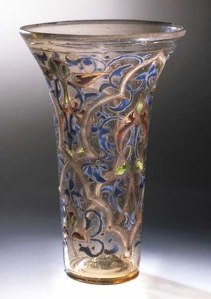It’s a good theory that faeries are most strongly associated with the ‘Celtic Fringe’ (Scotland, Ireland, the Isle of Man, Cornwall and Wales) because these areas were not overrun by later beliefs that came with the Romans and Anglo-Saxons. Cumbria also largely missed out on the Saxons, so our traditions have a lot in common with the classic Celtic areas. But a perusal of a map, never mind a tome of folklore, shows that Cumbria has at least as many elves as faeries.
The word, ‘elf’ is derived from ‘alfar’, the Scandinavian word for diminutive supernatural types; they are, if you like, Viking faeries. There are several Elf Howes; the Elfa Hills; Elva Hill, Elva Plain and Elva stone circle; Elf Hall at Hallthwaites, Ellabarrow at Pennington, and lots more. Continue reading



